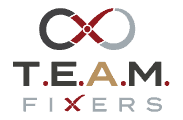Have you ever noticed how some people are always calm while you run from one task to another?
Even after following the advice of a lot of productivity experts and reading dozens of books time management, the challenge still remains for most of us, right?
While it is great when you implement something into your work flow that saves you time, the challenge lies in that any extra time you gain goes to another activity. In many cases, this time you have gained is filled with things that don’t help you move forward.
The key is to be in the sweet spot where by doing the right things you find more success.
In many cases, having a better strategy is essential.
The Bridge Between Productivity And Effectiveness
The upper right quadrant—the sweet spot—is where you can find the bridge between productive and effective.
By not only working hard but also working smart, you have more time available to do what matters to you.
Choose What Is Urgent
Urgency is rarely considered when looking at productivity. Instead, focus often shifts to what is super important. Unfortunately, our brain sees it differently. At that level, this sabotages us. Normally, our brain focuses on urgent matters. When your mental energy is too low, you can try to be productive, but you will not make real progress.
Consider Speed and Direction
Do you know what the secret is to finding your sweet spot?
Here’s the secret: the actions you take right now shape your future. This depends on how you use your Time, Energy, Attention and Money (T.E.A.M.). This is step two of our five simple principles to keep in check your to-do list.
Make some time for progress. That is why there must be a bridge between productivity and effectiveness. Make no mistake, this can be difficult. At times, it may like building a bridge while you walk on it.
As a knowledge worker, you are most effective when you find your stride. When you work hard with intentionality in your roles and responsibilities. This is how you find yourself in the sweet spot.
Working on your effectiveness is an ongoing task, so it requires continual effort.
In the past, I was responsible for work simplification at Colruyt. My job description included simplifying, structuring and optimization of physical processes. Work Simplification often includes calculation for additional capacity. Additional capacity is how a company (or individual) copes with growth. Anytime there is growth, continual effort is required.
So if you’re a knowledge worker who wants to make an impact in your organization, you must remain effective. You must consider structure. You must continually grow.
Knowledge work has evolved over the years. A book that helped me immensely is Michael Gerber’s book The E-Myth. If you would like to become an entrepreneur, I highly recommend you read this book. In the book Gerber says “You have to work not only in your business but also work on your business.”
This is not one or the other, but both. And to do this, you need to break down the tasks into manageable steps, or it’s likely you won’t do it.
In order to make the bridge between productive and effective, there are two steps to take.
1. Increase Your Speed
That means getting more with less effort. Take a course to help you read faster. Batch your work. Set a timer to be more aware and to push yourself to work faster on simple tasks.
2. Know Your Direction
Where do you want to go? This question has to be answered first. I don’t believe you will find your passion or the direction at the start. Cal Newport says “I believe in doing things. By doing things, you can find what you love to do and discover where you can contribute.”
Work Faster
More speed comes not from working harder, but by working on projects that give you additional Time, Energy, Attention, and Money.
Here are nine ways you save time and also accomplish the tasks on your master list:
1.Quit doing some tasks. Avoid continuing to do items that are not giving you positive results.
2. Do less work. Reduce the number of meetings or times you do things.
3. Batching similar tasks together. Email is a great example.
4. Simplify. Eliminate extra steps that require time and energy.
5. Systemize. Have a specific approach for your work.
6. Automate. Use tools that save you time and effort.
7. Delegate. Giving some tasks to coworkers will save you time.
8. Outsource. Get a freelancer to assist you with design work or any special skills required.
9. Mindfully multitask. Listen to audiobooks while you commute or take a walk while you make phone calls.
If you would like more detail, you’ll enjoy this post 10 Ways To Give Yourself Extra Time.
Clear Direction
Have you ever heard the phrase “Follow your passion and everything will be fine”? It seems like this is only the necessary condition to start. But what do you do if you’re not sure what it is you’re passionate about? What if you are passionate about multiple things?
Of course, it helps if you know where you want to go. Then you can figure out how to get to your destination faster. But it is certainly not a prerequisite to starting.
In many cases, it is by starting that you gain valuable insight. And there is no better time to start than right now. You do not have to have everything figured out to start. The key is to establish your priorities and to set manageable goals that are broken down into simple steps. With every step you take be honest with yourself. Then you will find clarity. As you continue to move forward you will start to be both productive and effective.
As you continue to move forward, you will start to be both productive and effective. Don’t settle. Keep growing. Keep improving.



